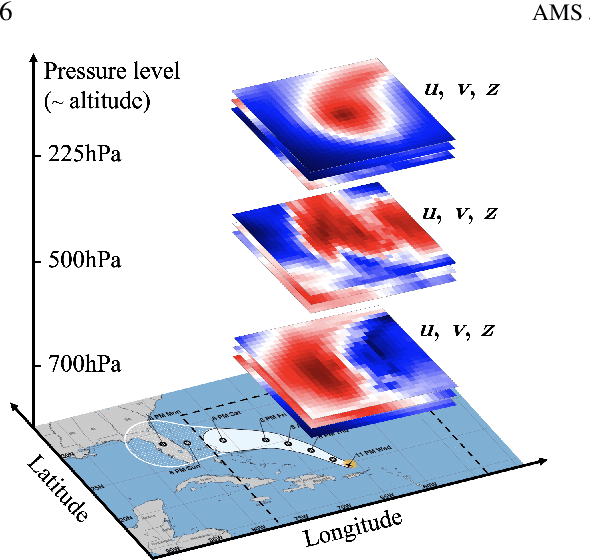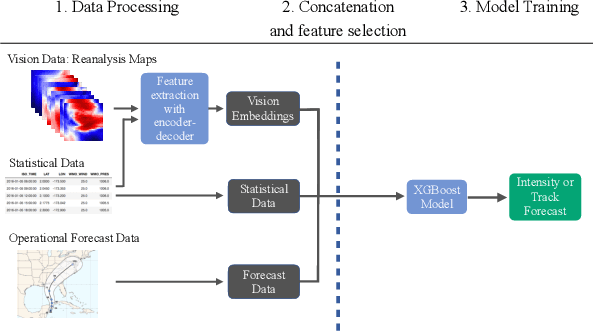Hurricane Forecasting: A Novel Multimodal Machine Learning Framework
Paper and Code
Nov 11, 2020



This paper describes a machine learning (ML) framework for tropical cyclone intensity and track forecasting, combining multiple distinct ML techniques and utilizing diverse data sources. Our framework, which we refer to as Hurricast (HURR), is built upon the combination of distinct data processing techniques using gradient-boosted trees and novel encoder-decoder architectures, including CNN, GRU and Transformers components. We propose a deep-feature extractor methodology to mix spatial-temporal data with statistical data efficiently. Our multimodal framework unleashes the potential of making forecasts based on a wide range of data sources, including historical storm data, reanalysis atmospheric images, and operational forecasts. Evaluating our models with current operational forecasts in North Atlantic and Eastern Pacific basins on the last years of available data, results show our models consistently outperform statistical-dynamical models and, albeit less accurate than the best dynamical models, our framework computes forecasts in seconds. Furthermore, the inclusion of Hurricast into an operational forecast consensus model leads to a significant improvement of 5% - 15% over NHC's official forecast, thus highlighting the complementary properties with existing approaches. In summary, our work demonstrates that combining different data sources and distinct machine learning methodologies can lead to superior tropical cyclone forecasting.
 Add to Chrome
Add to Chrome Add to Firefox
Add to Firefox Add to Edge
Add to Edge